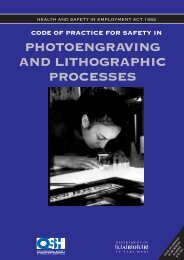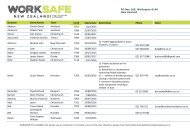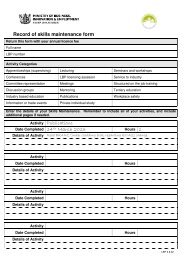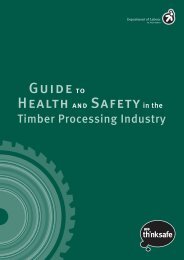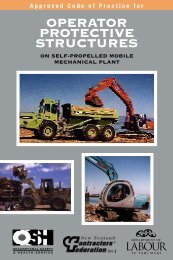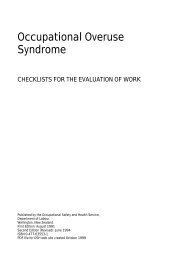Annual Report 2012 - Business.govt.nz
Annual Report 2012 - Business.govt.nz
Annual Report 2012 - Business.govt.nz
Create successful ePaper yourself
Turn your PDF publications into a flip-book with our unique Google optimized e-Paper software.
The remaining cases were pleural plaques. Two were males who were exposed in childhoodto asbestos dust brought into the home by their fathers, both of whom worked in at anasbestos cement plant. In one case, the father died of lung cancer as a consequence of hiswork exposure to asbestos. In the other case it is recorded that “it was not uncommon forthe workers to take their children in [to work] on Saturday morning, which was their ‘cleanupday’ – probably one of the dustiest situations – where the children could make ‘snowballs’ with the asbestos”.In an unusual situation, the home of a worker and family was situated across the road froman asbestos cement manufacturing plant. He died of lung cancer and his wife was found tohave pleural plaques in an X-ray carried out in later life. Here, there was a possibility thatthe proximity of the home to the plant resulted in environmental contamination within thehome and its surroundings, resulting in sufficient exposure over many years to account forthe two conditions.Environmental exposure and asbestos-related diseaseErioniteErionite is a naturally-occurring fibrous mineral. It has been listed as a Group 1 carcinogenby IARC (the International Agency for Research on Cancer) and animal studies suggest that ithas a greater carcinogenic potential than crocidolite (‘blue’) asbestos. It first came toattention among people who lived in three villages in the Cappadocian region of CentralAnatolia in Turkey. In this situation, erionite was excavated from local volcanic tuffs tocreate storage areas, and also for use in construction materials. Investigation showed thatmalignant mesothelioma, localised and diffused pleural thickening, and interstitial fibrosiswere significantly increased, compared with unexposed villages.A 2011 study on erionite exposure in North Dakota, USA, among workers in gravel pits androad works, indicated that out of 35 workers investigated, seven had either bilateral pleuralchanges or interstitial lung changes. Complex assessment of these seven related in twohaving bilateral pleural changes, most likely resulting from environmental exposure to dustcontaining erionite in the course of their work.Another study on environmental exposure occurred in New Caledonia 3 . In this situation,studies had shown that the soil contained serpentine.A case control study on malignant mesothelioma was carried out as a result of the highincidence of malignant mesothelioma. 109 cases recorded in the cancer registry of NewCaledonia between 1984 and 2008 were investigated. The study concluded that serpentineon roads was the greatest environmental risk factor (odds ratio 495.0; 95% CI, 46.2-4679.7).Asbestos and other Occupational Lung Diseases in New Zealand <strong>2012</strong> <strong>Annual</strong> <strong>Report</strong> Page 26


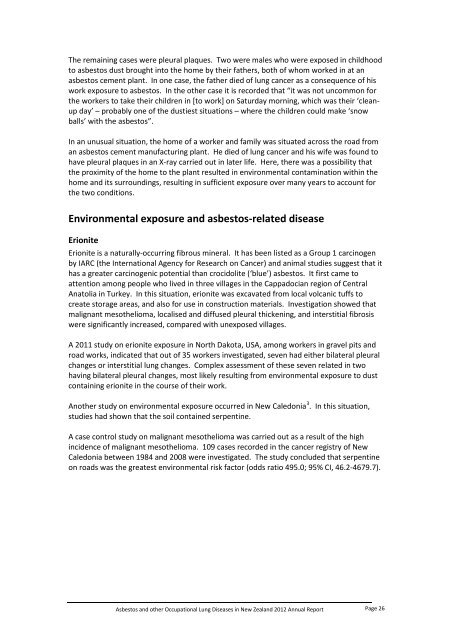

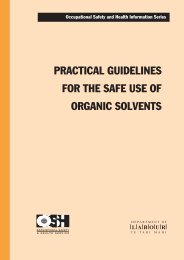
![Task analysis worksheet [161 KB PDF] - Business.govt.nz](https://img.yumpu.com/51400981/1/190x135/task-analysis-worksheet-161-kb-pdf-businessgovtnz.jpg?quality=85)
